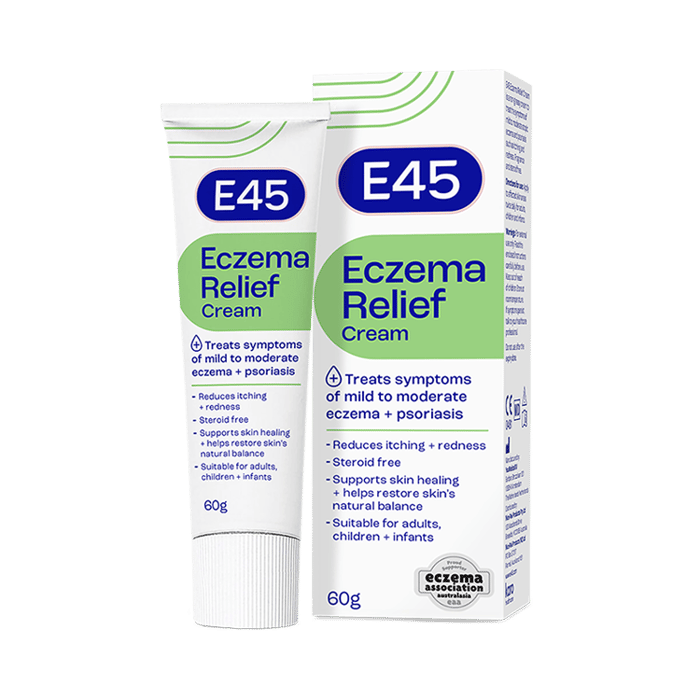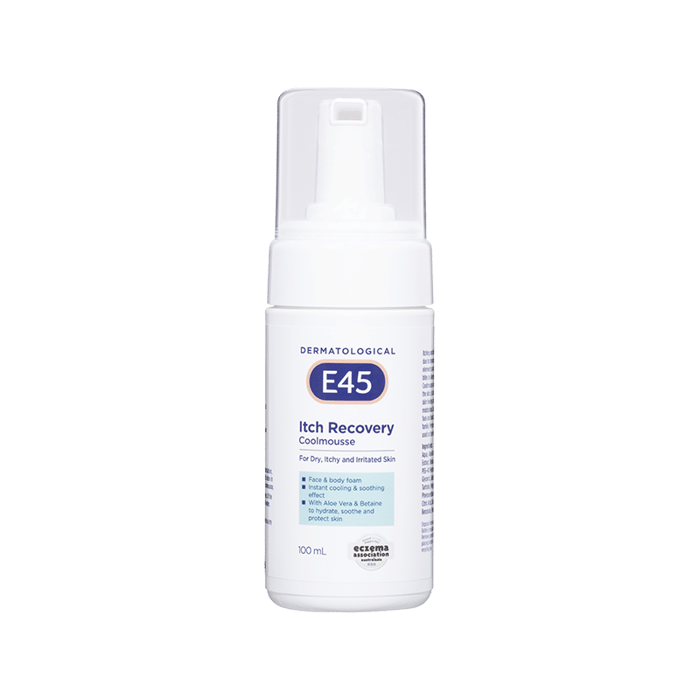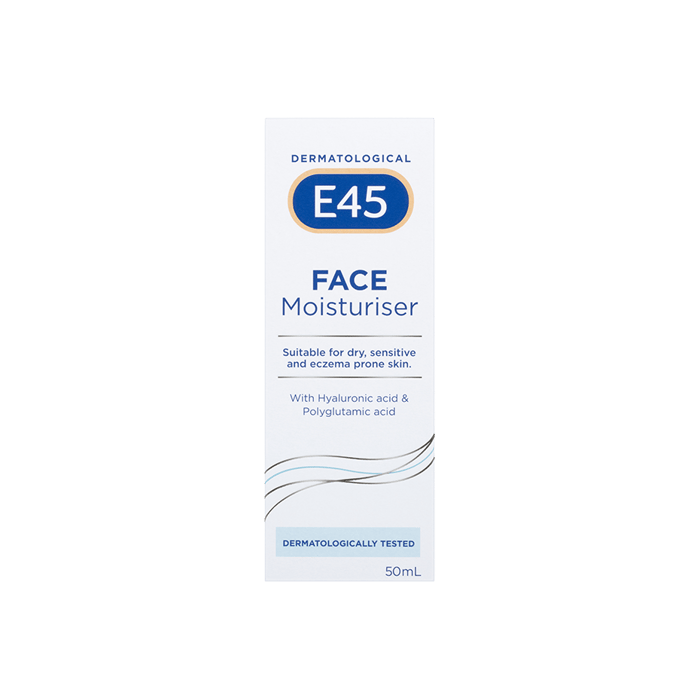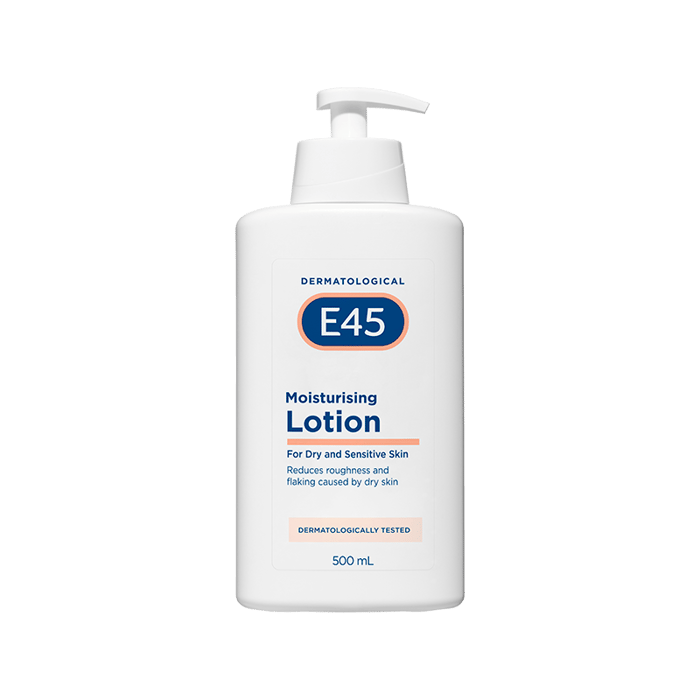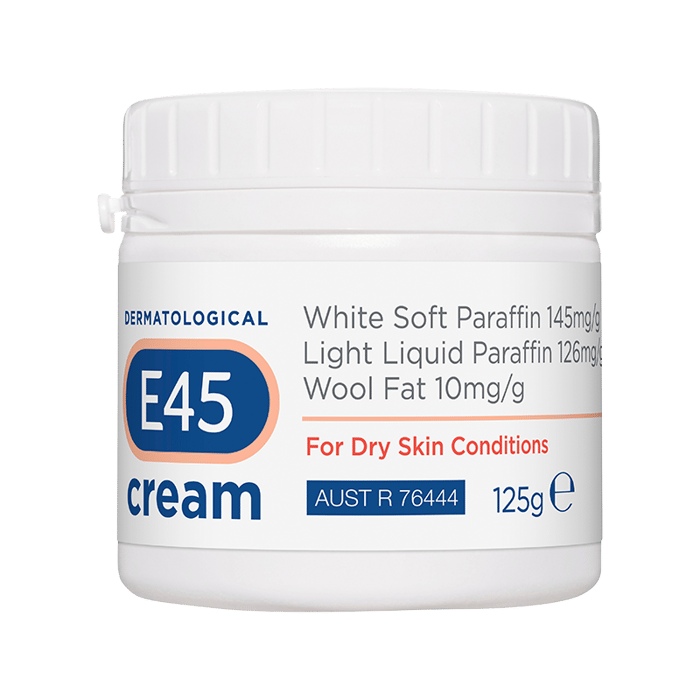Dermatitis
Dermatitis is another name for a type of inflammation of the skin.
What is it and how do I manage it?
Dermatitis is another name for a type of inflammation of the skin. In fact, you might see eczema called dermatitis, and the other way around. That’s because dermatitis and eczema are actually different words for the same thing. In some of these cases, eczema is more commonly used – for example atopic eczema.
However, there is one condition that is more often called dermatitis, and that’s contact dermatitis. You may occasionally see it referred to as contact eczema. This specific type of skin inflammation develops when our skin directly touches an allergen or irritant, triggering an inflammatory reaction.
There are two main types of contact dermatitis – allergic and irritant. The main symptom of contact dermatitis is itchy skin, and it can be intensely itchy. It’s natural to want to scratch to ease the itch, but that could damage the skin, making your contact dermatitis worse. This is known as the itch-scratch cycle. Knowing what type of contact dermatitis you have is important when it comes to managing your condition, but it is possible for you to have both allergic and irritant contact dermatitis at the same time.
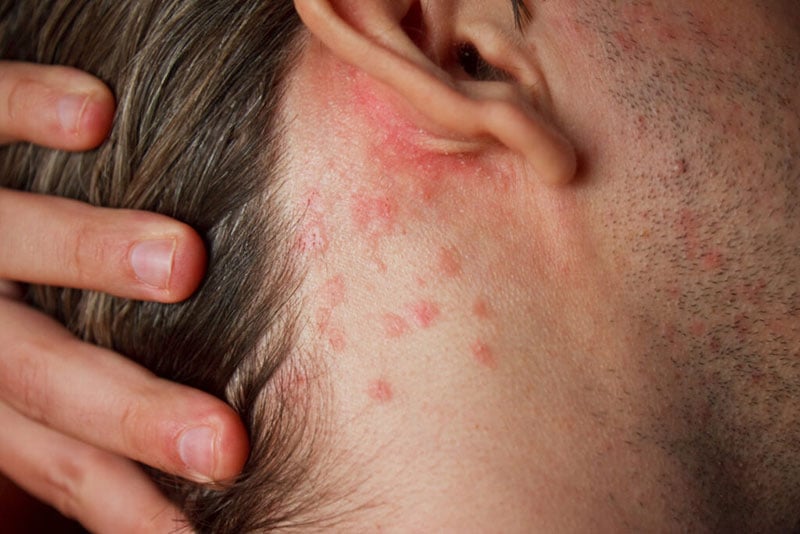
Types of contact dermatitis
There are two main types of contact dermatitis:
Allergic contact dermatitis
Allergic contact dermatitis occurs when your skin comes into contact with an allergen, triggering an immune reaction. Nothing obvious may happen the first time you come into contact with the allergen, but you may become sensitised. So the next time your skin touches the same allergen, it reacts. Sometimes the condition can suddenly develop to something you’ve been using for a long time without any problems. Common allergens that people react to include cosmetics, hair dye, perfumes, nickel, cobalt, rubber additives, plants like sunflowers and some medicines that are applied to the skin.
The main symptom is itching, but in severe cases your skin may blister and become weepy. Around two-thirds of people with contact dermatitis find it affects their hands. You might find that skin that has not been in direct contact with the allergen can also be affected; for example, rubbing your face or eyes with your fingers can transfer the allergen to these new areas of skin. Allergic contact dermatitis usually clears up within a few weeks, but it can become a long-term problem, causing your skin to become dry, thick and cracked. Symptoms usually appear within 24-72 hours after coming into contact with an allergen. It can take many days to get better, even with treatment.
Around a quarter of people have experienced allergic contact dermatitis. It is more common if you have certain jobs, such as being a bar person, hairdresser or barber. It’s also more common if you have a family history of allergy or if you have asthma, eczema or hayfever.
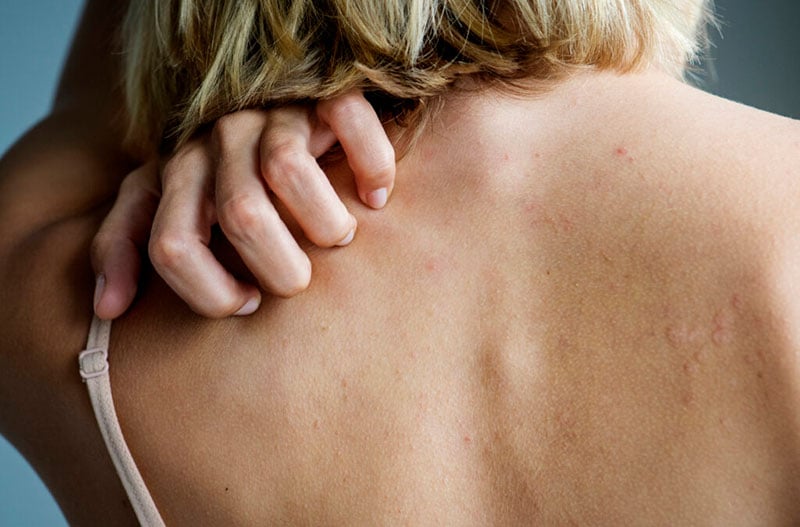
Irritant contact dermatitis
Around 80% of all contact dermatitis is caused by irritants. Irritant contact dermatitis happens when your skin touches irritating substances and/or chemicals. These remove your skin’s natural protective oils, causing damage with repeated or prolonged contact. Common irritants include water, sweat, cleansers, soaps, and certain plants, like mustard.
Irritant contact dermatitis can be either:
- acute – where you can either get an immediate reaction after coming into direct contact with a strongly irritant substance (such as an acid) just the once or after a few times
- chronic (also known as cumulative) – where symptoms develop over time with regular contact with mild irritants, such as water, soap, dust and/or dry air.
Irritant contact dermatitis may cause your skin to sting, burn and feel tight, dry and chapped. Usually it’s only the part of the skin that has come into contact with the irritant that is affected. Usually, once you avoid the irritant, your skin should clear up within a few days.
Although anyone can develop irritant contact dermatitis, it’s more common in people who spend a lot of time with their hands in water, such as cleaners, cooks, bar-persons, nurses and hairdressers.
General symptoms of contact dermatitis
Symptoms of contact dermatitis can depend on whether it is caused by an allergen or an irritant. You may have a few of the following symptoms:
- Itchy skin
- Red skin
- Burning skin
- Dryness
- Chapped skin
- Sore painful skin
- Blisters / pustules
- Cracked skin
- Flaky skin
- Weepy skin
- Hives/urticaria
Contact dermatitis triggers and factors
Contact dermatitis triggers can vary from person to person. These are the most common:
Allergens – indoors
Common allergens that people react to include cosmetics, hair dye, perfumes, nickel, cobalt, rubber additives and some medicines that are applied to the skin.
How to avoid:
- Try, where possible, to avoid the allergen
- Rinse with water or wash with soap, ideally a soap substitute, as soon as possible after being in contact with the allergen
- If the allergen is something that is job-related, you may consider changing your role in the long term.
Allergens – outdoors
Some allergens are found outdoors, such as plants like sunflowers, daffodils, tulips and chrysanthemums. These allergens are carried in the air.
How to avoid:
- Try, where possible, to avoid the allergen. Also avoid skincare products that contain extracts of these plants, as these can also trigger a reaction
- Avoid going outdoors when pollen levels are high in the summer
- Avoid planting these types of flowers or having them in the house
- Wear barriers like gloves when gardening or clothing when out and about
- Bathe after being outdoors to remove pollen
- Antihistamines can help manage allergic reactions.
Air conditioning and central heating
Dry air, for example from air conditioning or central heating, can be a weak irritant. Being in an environment where you are exposed to dry air all the time can build up on your skin, causing chronic irritant contact dermatitis.
How to avoid:
- Keep your house at a regular temperature to avoid overheating or extremes of temperature (18°C is ideal)
- Use humidifiers to put moisture back into the air or place bowls of water under radiators
- If possible, use radiators to heat your house rather than convection heaters.
Diet
Some foods can also cause irritant and/or allergic contact dermatitis – for example citrus fruits, raw onions, garlic, tomatoes, peppers, mustard and chillies.
How to avoid:
- If you are handling any irritant food wear cotton lined gloves, though only for 20 minutes at a time as these can cause sweat that may also irritate skin
- Wash hands after contact using a soap substitute then apply an emollient afterwards
- Wash surfaces and utensils well after handling in the kitchen
- Avoid eating if it’s a known allergen.
Cleansers
Soaps, detergents and fragrances are the most common irritants for contact dermatitis. Water alone can also irritate the skin.
How to avoid:
- Wash hands with a soap-free product – use an emollient as a substitute for soap
- Use fragrance-free products
- Always take any rings off before washing hands as soap can collect under jewellery, causing irritation
- Wear gloves when doing household tasks, ideally plastic gloves with a cotton liner, but only wear for a maximum of 20 minutes at a time as any sweat can also irritate the skin
- Use ‘ecoballs’ in place of laundry detergent or, if using detergent, do a double rinse cycle to remove any traces of detergent.
How to manage contact dermatitis
The most effective way to manage contact dermatitis is to avoid the allergen or irritant that is causing the problem. It can take between 8-12 weeks before symptoms improve. However, you may want to find some relief in between. Fortunately, you can manage contact dermatitis with products that are available over the counter from your pharmacy. If you have a severe reaction, seek medical attention immediately.
Emollients
Emollients are moisturizers that can help with dryness and itching. They can come in many forms including creams, lotions, ointments or sprays. Emollients should be applied to the skin regularly, sometimes even multiple times a day. The area of coverage and frequency will change depending on your symptoms and condition, the severity and which product you are using. Always refer to the label for proper use. Having well moisturised skin can help create a barrier which can prevent flare-ups.
Applying emollients regularly can help keep you manage your contact dermatitis by:
- Leaving an oily film over the surface of the skin, helping to retain water underneath
- Helping to maintain a healthy skin barrier
- This, in turn, helps protect the skin from damaging irritants and allergens.
Itchiness is the most common contact dermatitis symptom, so finding a way to manage this itch is important. In fact, some emollients contain extra ingredients to help control itchiness. Ingredients such as oatmeal have anti-itch properties, or lauromacrogols, which relieve itch through a local anaesthetic action.
As regular soaps and cleansers can irritate the skin and cause dryness, it’s also important to consider washing with an emollient too. There are special emollients that can be used for washing just as you would use soap, or you can apply your leave-on emollient as a soap substitute. Be prepared though – while emollient soap substitutes clean effectively, they don’t lather up like regular soap. You can also add emollients to your bath.
Steroids
Mild steroids creams and ointments can be bought from your pharmacy to help relieve contact dermatitis and mild-to-moderate eczema. These help manage flare-ups in atopic eczema by altering the body’s responses to inflammatory reactions. Always check the label for how to use the product correctly and safely; always check who can use the product as many over the counter steroids having limitations regarding age and pregnancy.
It’s important to know that steroids are applied differently to emollients:
- Apply very thinly and to just the affected area
- Apply once or twice a day for a maximum of 7 days
- Only apply to certain parts of the body and not to the face, eyes, broken or infected skin, genital areas or the bottom
- If you are pregnant or breastfeeding, you should speak to your doctor before using a steroid cream.
Always carry on using your emollient alongside your steroid but leave about 20-30 minutes between applying each one. It doesn’t matter which you apply first or second, as long as you wait the advised 20-30 minutes in between.
If it’s the first time you have used a steroid cream – as with any new medicine – speak to your pharmacist or doctor first to find out if it’s the right choice for you. They will also be able to give you tips on how to apply correctly.
Antihistamines
Antihistamines can be used to help relieve the itchy skin of contact dermatitis. Although they are available in a number of different formats (such as tablets, capsules, syrups or creams), tablets or syrups are most likely to be recommended.
Ask your pharmacist or doctor for advice on taking an antihistamine that is right for you.

